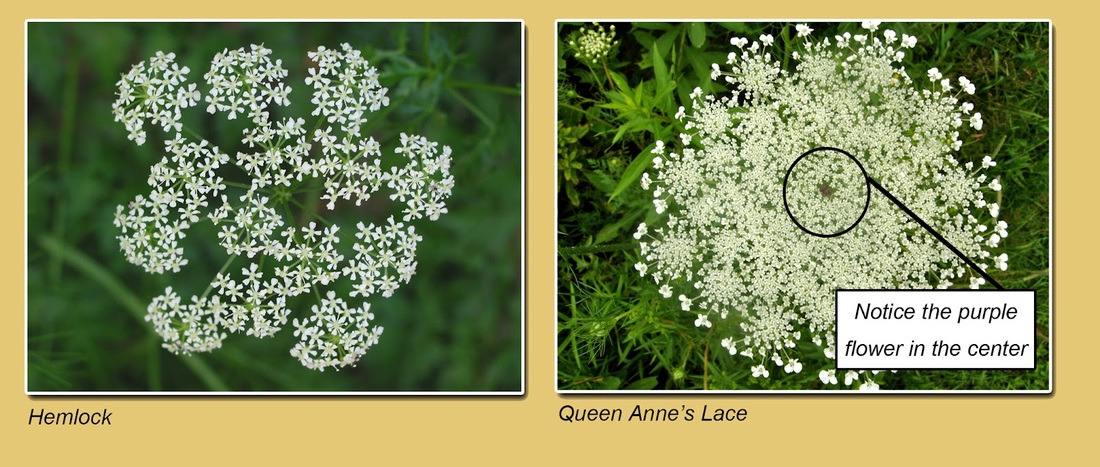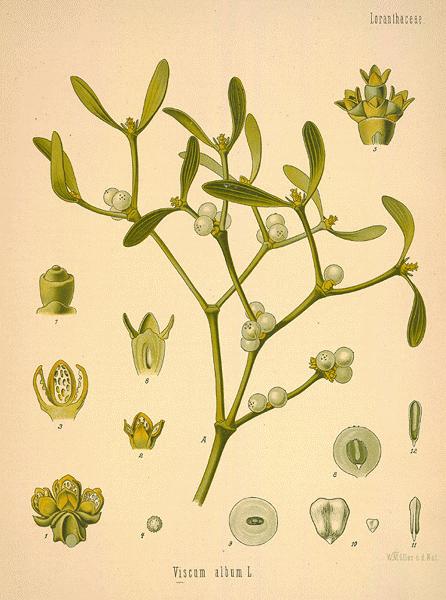When I was gardening at Great Dixter some years ago, I met one of the bad boys of the plant world: Giant Hogweed. I remember the encounter quite well, particularly because of Fergus's stern admonition as to what might happen if we didn't heed his warnings about how to approach it. While Giant Hogweed looks pretty and impressive, this plant's sap can cause severe burns on exposed skin and if it gets in your eyes, well, it's bad. Really bad. Like, go to the hospital and probably should learn Braille, bad.
So there we were, the four of us, charged with the task of ridding the garden of a particularly large specimen. The reason I remember this so clearly is because three of us took precaution to the next level with tall boots and long socks, long trousers, long sleeves, heavy gloves, goggles, hats, and bandannas over our faces. We looked like a crew of botanical outlaws! All but the French intern, who took up the machete with a glint in her eye and started slashing the thug to bits, wearing only trainers with short socks, running shorts, and a tank top. Amazingly, she suffered no harm and together we vanquished the enemy, reducing its 12' height and about 8' width into several sturdy garbage bags.
So when the sensational news recently came out about the state of Virginia being invaded by a whole colony of Audrey-like marauding Giant Hogweed, I noticed because I live here now. Since I had lived to tell the tale of my English encounter with the weed, I really didn't see what the big deal was but the news made it all the way across the country and I started receiving concerned emails from friends in California. Surely an authority in the plant world would come forth and set the record straight but it took several days of hearing about it on the radio and seeing it plastered all over the internet and social media before anyone did.
My favorite headline was from the New York Times, cheekily borrowing that soothing phrase from The Hitchhiker's Guide to the Galaxy, 'Don't Panic!' after warning of burns and blindness.
So what is this pestilential plant and should you be worried about it? The short answer is no, but let's start with properly identifying it and how to deal with it, if found.
 |
| A poster warning of the harmful effects of exposure to Giant Hogweed sap. New York State Department of Environmental Conservation |
Plant names often contain hints as to a plant's physical characteristics and Giant Hogweed is just that - giant. It can reach 15' in height and the leaves can be upwards of 5' wide with stems up to 4" in diameter. To say it has presence is an understatement and so isn't something you're likely to accidentally brush against on a hike. You'd really have to blunder into it in a big way. The airy white flowers form an umbel (same root word as 'umbrella') which reveal its relation to the carrot family (which also includes the common culinary herbs parsley, fennel, anise, celery, coriander, cumin, and dill) but please don't try to eat it!
But I digress.
Instead of plodding through all the plants to avoid, it seems easier to me to identify the one that's safe, or least likely to eat you alive. Anything else that looks similar but doesn't display the same characteristics probably should be avoided. At best, one should use common sense and proper PPE (personal protective equipment) when dealing with this family if you don't know precisely who you're dealing with.
Daucus carota, commonly known as Queen Anne's Lace or wild carrot, is an herbaceous biennial that grows about 3' tall. The stems are green, rough, hairy, and solid when cut. The small white flowers form a dense umbel (there's that word again) with a purple flower in the center.
 |
| A Queen Anne's Lace umbel in profile. The stems are hairy and completely green, with no blotches of color. |
 |
| The solid core of a cut stem of Queen Anne's Lace. |
 |
| Meet 'Dara', a colorful ornamental variety of Daucus carota. She still sports a darker purple center. |
To me, the most immediate way of telling the wild carrot apart from Poison Hemlock is to cut it. If the stem is hollow, step away. After all, this is the plant that killed Socrates. Unlike the Queen, Poison Hemlock grows taller, has smooth stems with purple blotches, the umbel isn't as dense and the purple center is conspicuously absent.
 |
| http://bcpoultryhobbyfarmingnetwork.weebly.com/know-your-plants.html |
For those in the know, neither Queen Anne's Lace or Poison Hemlock can be confused with Giant Hogweed, seeing as it's so much bigger than either of them. That's why it's handy, not to say important, to Know. Your. Plants. As Marie Curie once said, "Nothing in life is to be feared, it is only to be understood. Now is the time to understand more, so that we may fear less". Knowing what Giant Hogweed is in the first place, and understanding how to deal with it in the second, means you shouldn't have anything to fear. I don't for those reasons, and because I had a good teacher who didn't just send a bunch of novices to deal with a dangerous plant without properly arming us first.
So what should you do if you think you spot one? First of all, Don't Panic! And don't touch* it if you're not sure what it is. Take a few photos of the leaf, stem, and flowers and send them to your local Cooperative Extension agent. This guide from VA Tech has a table showing the differences between several similar plants that are often confused and this handy media advisory, which also says to not panic and indicates that the population isn't spreading and there's really nothing much to worry about after all, provides more information on how to report it if you think you've spotted it.
So, forewarned is forearmed and understanding eliminates fear. If that doesn't convince you and all the Giant Hogweed hullabaloo still gives you nightmares, just remember:
*Giant Hogweed sap is phototoxic and causes severe skin inflammation when contacted skin is exposed to UV rays. If contact is suspected, get out of the sun and thoroughly wash affected area with soap and water. If irritation persists, consult a physician. If it gets in your eyes, rinse immediately with clean water and seek medical attention.















